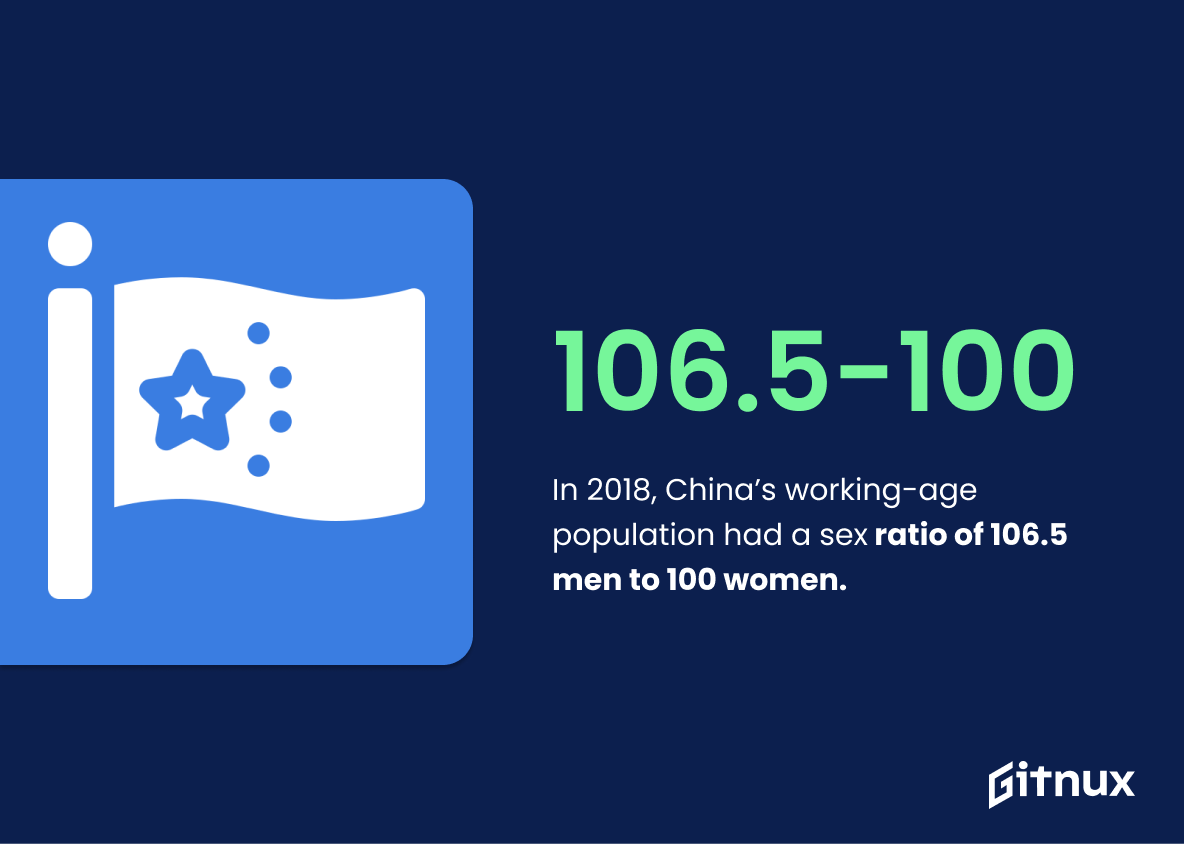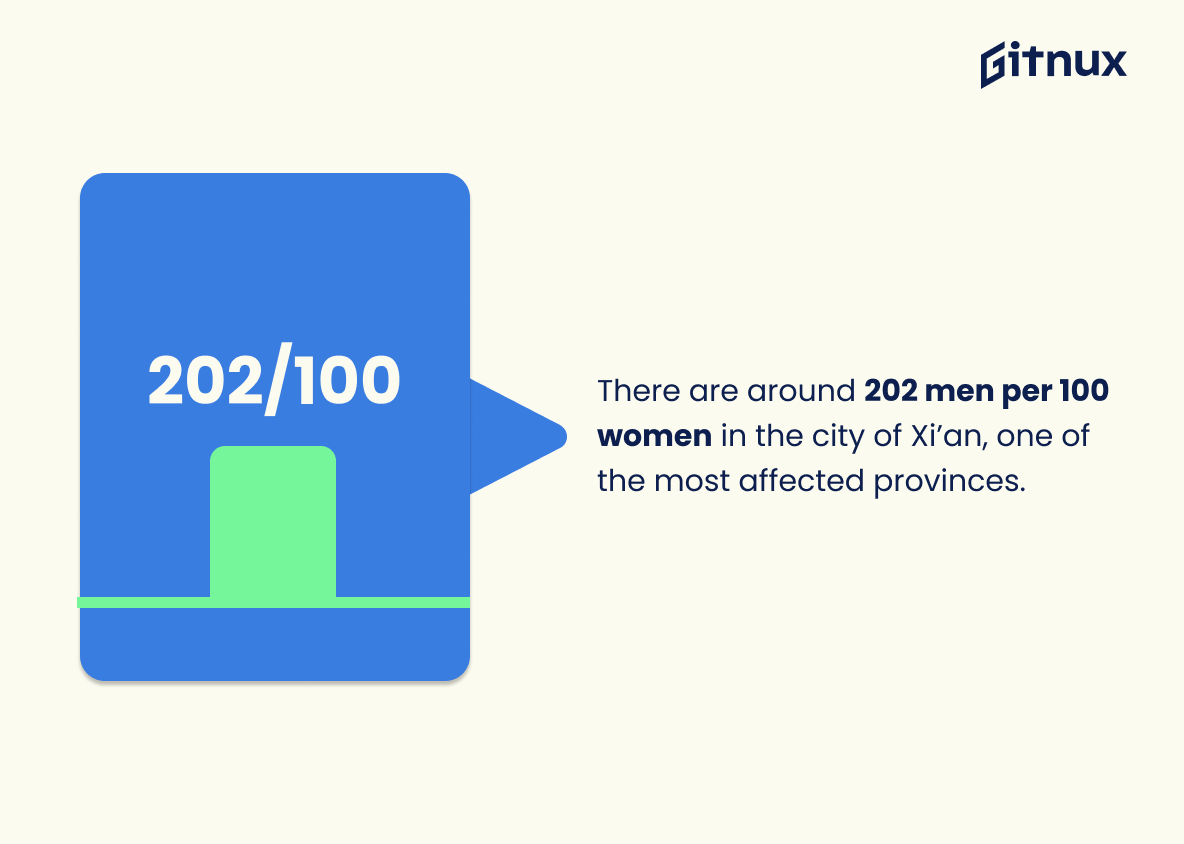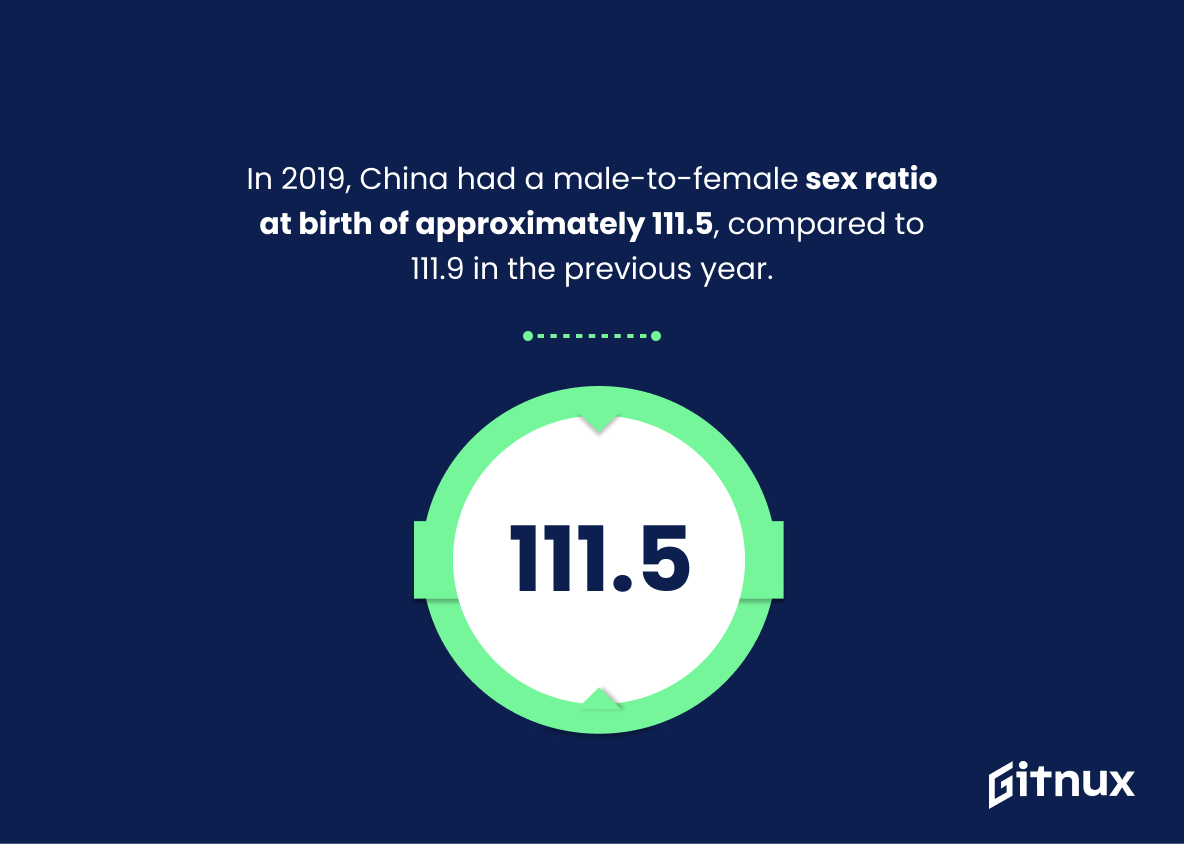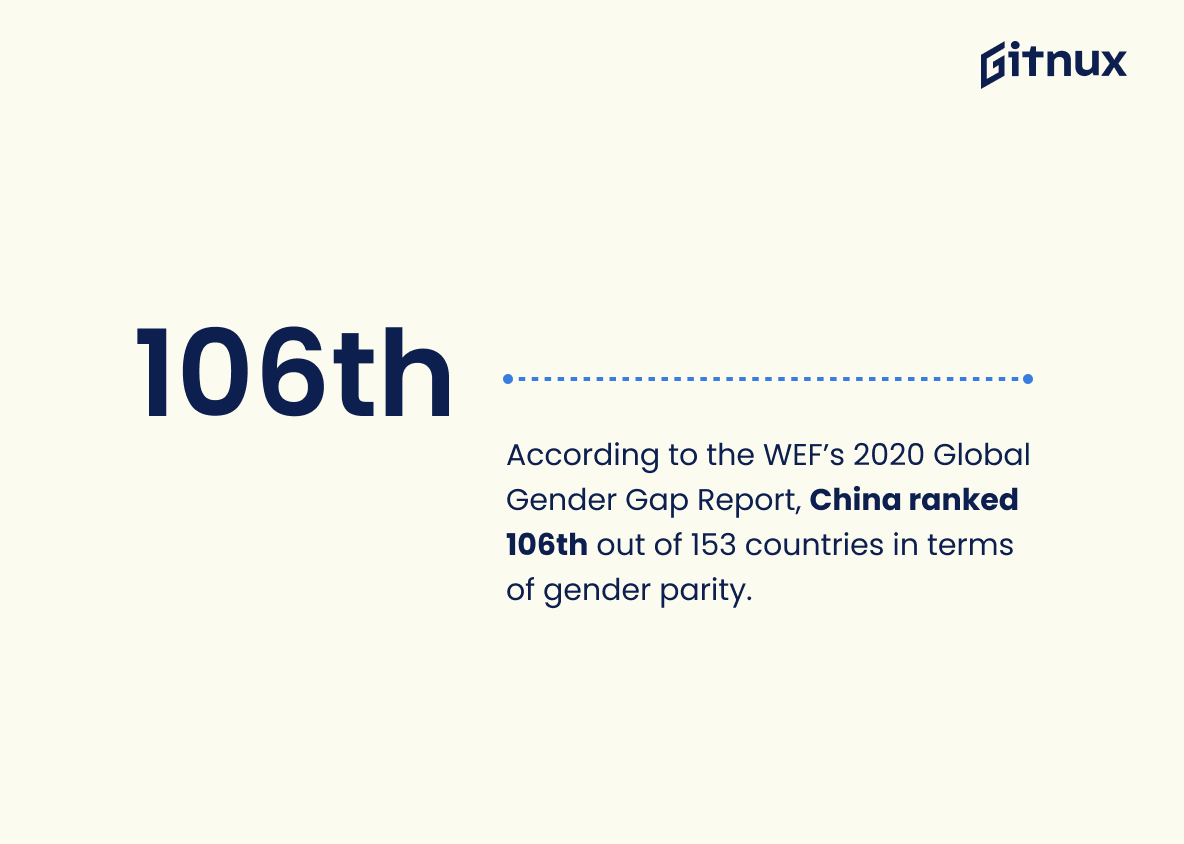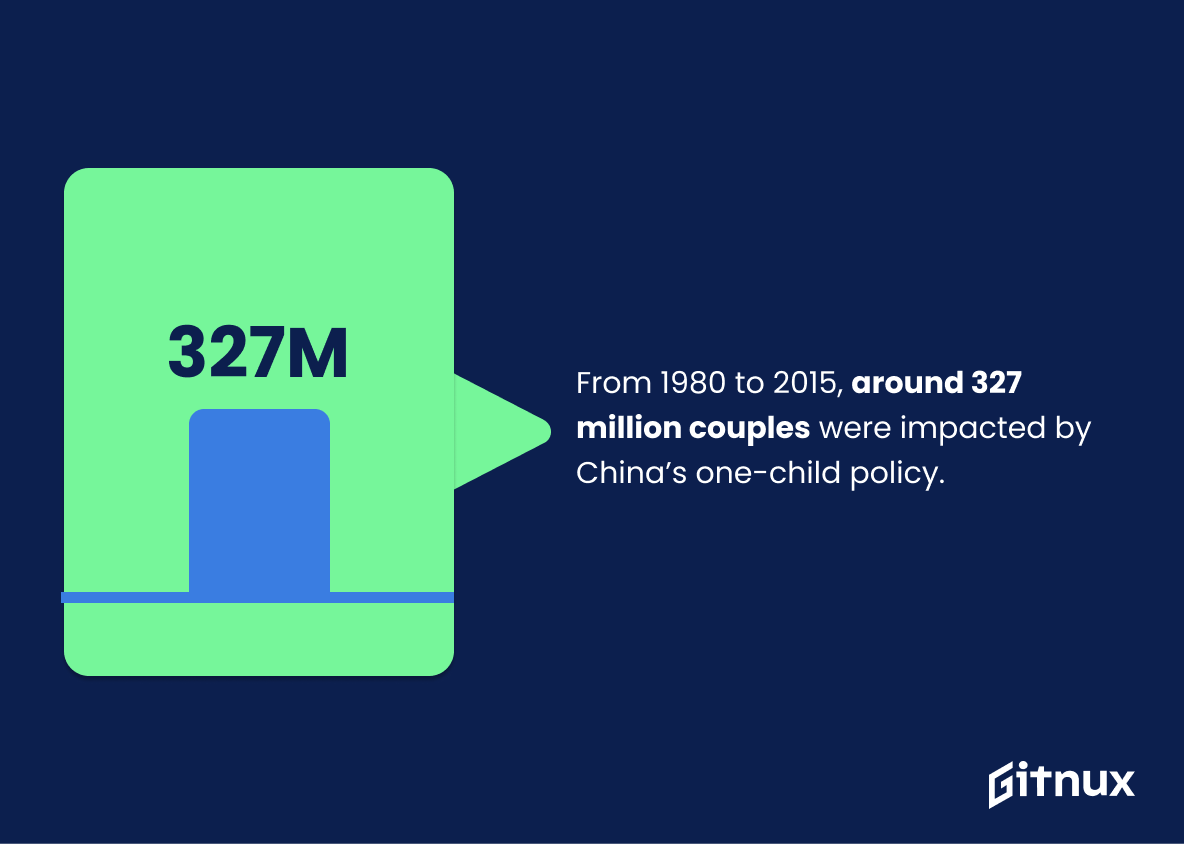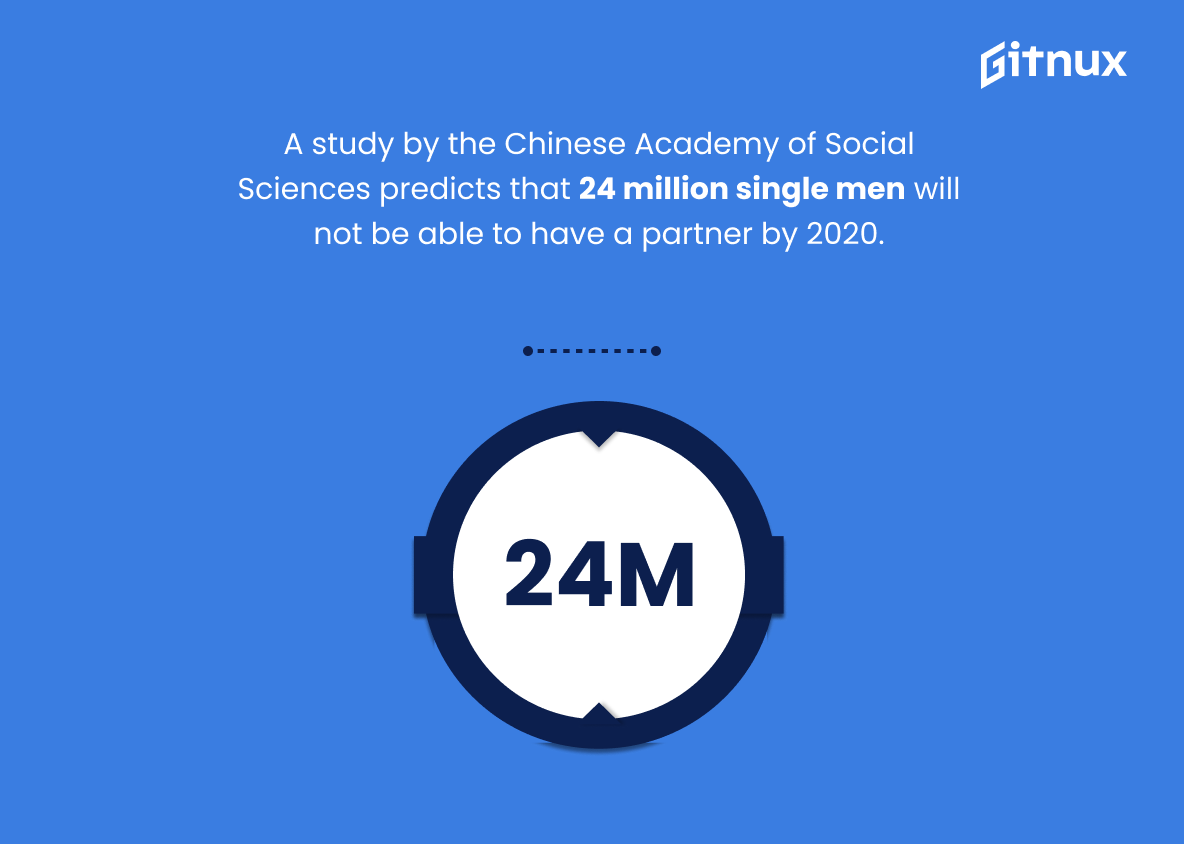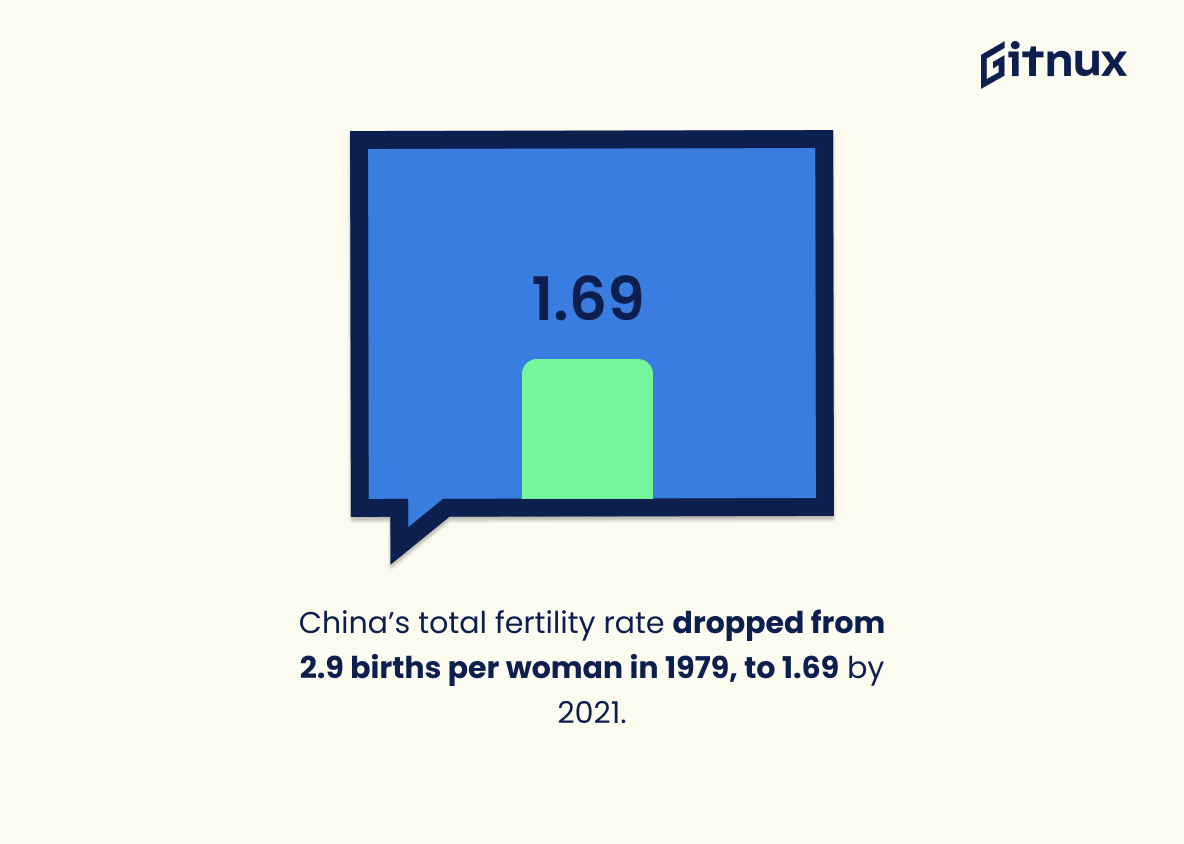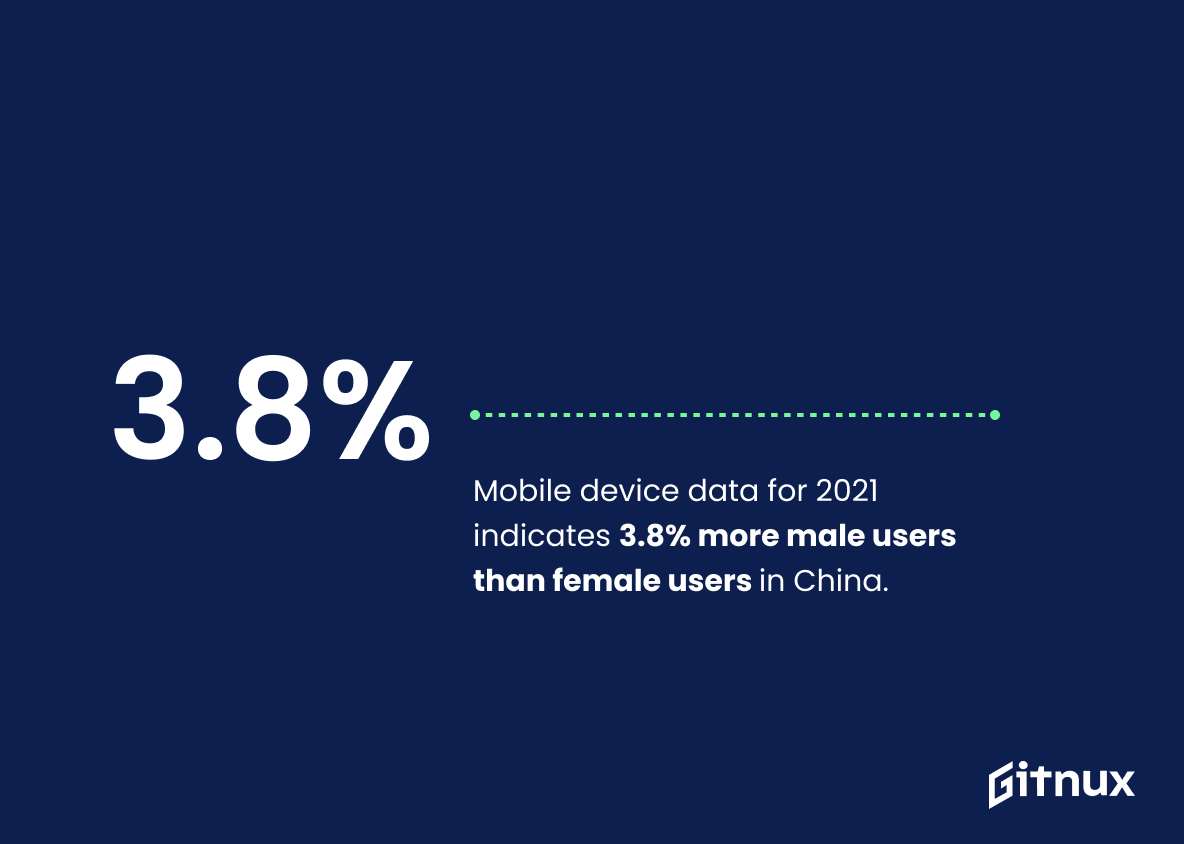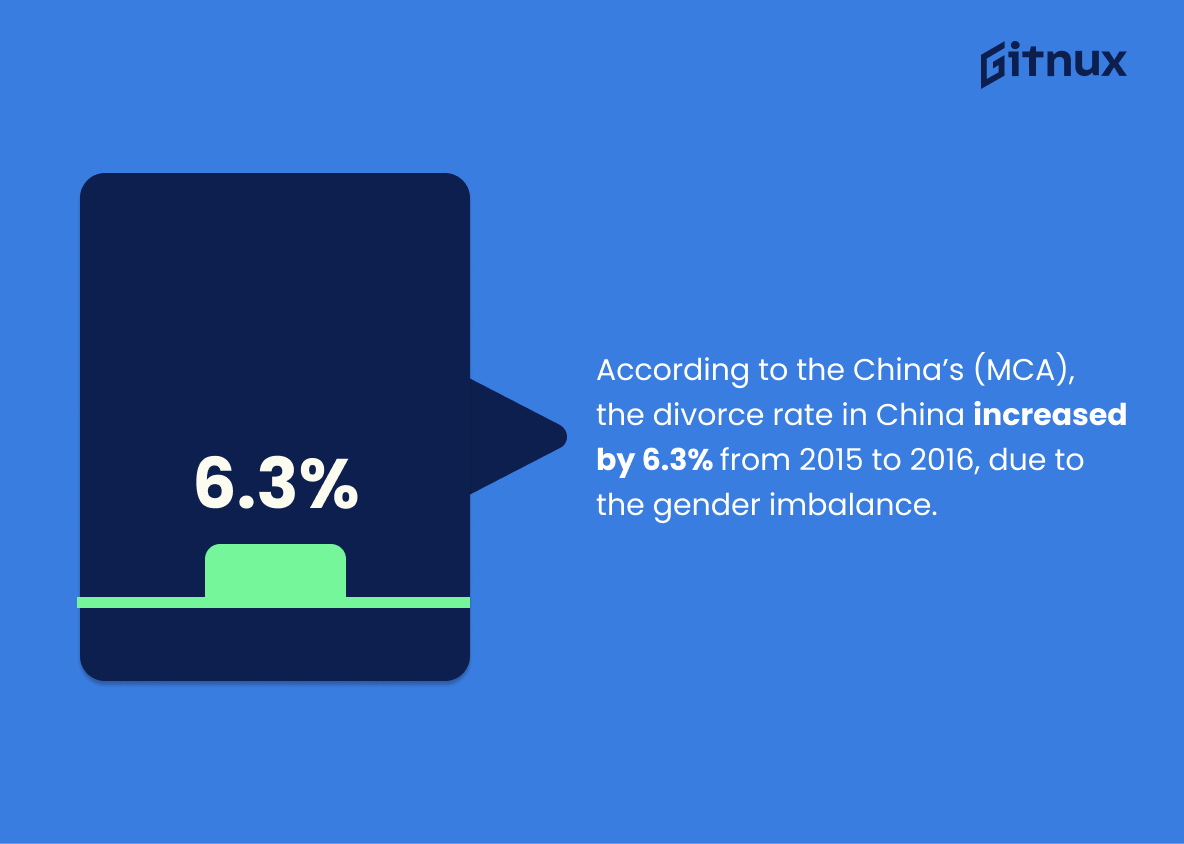The gender imbalance in China is a complex issue with far-reaching implications. This blog post will explore the statistics surrounding this phenomenon, from sex ratios at birth to mobile usage data and divorce rates. We’ll look at how the one-child policy has impacted these numbers over time, as well as what experts predict for the future of gender parity in China. Finally, we’ll examine some of the most affected regions and cities within China today.
China Gender Imbalance Statistics Overview
In 2018, China’s working-age population had a sex ratio of 106.5 men to 100 women.
This statistic is a stark reminder of the gender imbalance in China’s working-age population. With a ratio of 106.5 men to 100 women, it is clear that there is a significant disparity between the genders in terms of employment opportunities. This is an issue that needs to be addressed in order to ensure that all citizens of China have equal access to the job market.
The highest sex ratio at birth in China was observed in 2004 at 121.2 males to 100 females.
This statistic is a telling indication of the gender imbalance in China, as it shows that in 2004 there were 121.2 males born for every 100 females. This is a stark contrast to the natural sex ratio at birth, which is typically around 105 males to 100 females. This statistic serves as a reminder of the gender inequality that exists in China, and the need for further action to address the issue.
By 2050, it is expected that there will be nearly 50 million more men than women in China.
This statistic is a stark reminder of the gender imbalance that is expected to exist in China by 2050. It highlights the need for immediate action to address the issue of gender inequality in the country, as the gap between men and women is expected to widen significantly in the coming years. This statistic is a call to action for those who are concerned about the future of gender equality in China.
There are around 202 men per 100 women in the city of Xi’an, one of the most affected provinces.
The statistic of 202 men per 100 women in the city of Xi’an is a stark reminder of the gender imbalance that exists in China. This imbalance is a result of the country’s one-child policy, which has led to a preference for male children and a resulting gender gap. This statistic serves as a reminder of the need for China to address this issue and take steps to ensure gender equality.
In 2019, China had a male-to-female sex ratio at birth of approximately 111.5, compared to 111.9 in the previous year.
This statistic is a telling indication of the gender imbalance in China, as it shows that the number of male births is still significantly higher than the number of female births. This imbalance has been a growing concern in China, as it has led to a shortage of brides and an increase in human trafficking. The fact that the male-to-female sex ratio at birth has decreased slightly from the previous year is a positive sign, but it is still far from the natural ratio of 105.
The male population in China exceeded the female population by more than 34 million in 2019.
This statistic serves as a stark reminder of the gender imbalance in China, highlighting the magnitude of the issue. It is a powerful indicator of the prevalence of gender inequality in the country, and serves as a call to action for those seeking to address the issue.
China’s one-child policy, in effect from 1979 to 2015, is believed to have contributed significantly to its gender imbalance.
The statistic of China’s one-child policy being in effect from 1979 to 2015 is a crucial piece of information when discussing China’s gender imbalance. This policy, which limited families to having only one child, has had a profound effect on the gender ratio in China. By limiting the number of children families could have, the policy has resulted in a skewed gender ratio, with more males than females. This statistic is essential to understanding the current gender imbalance in China, and is a key factor in any discussion of the issue.
According to the WEF’s 2020 Global Gender Gap Report, China ranked 106th out of 153 countries in terms of gender parity.
This statistic is a stark reminder of the gender gap that exists in China. It highlights the fact that despite the country’s impressive economic growth, there is still a long way to go in terms of achieving gender parity. This statistic serves as a call to action for China to take steps to bridge the gender gap and create a more equitable society.
From 1980 to 2015, around 327 million couples were impacted by China’s one-child policy.
This statistic serves as a stark reminder of the immense impact that China’s one-child policy has had on couples across the country. It is a testament to the far-reaching consequences of the policy, which has had a profound effect on the gender balance in China.
A study conducted by the Chinese Academy of Social Sciences predicts that by 2020, there will be approximately 24 million single men in China unable to find a spouse.
This statistic is a stark reminder of the dire consequences of China’s gender imbalance. With 24 million single men unable to find a spouse, it paints a picture of a society in which the traditional family structure is under threat. This statistic is a powerful illustration of the need for China to address its gender imbalance in order to ensure the stability of its society.
In rural areas of China, the number of unmarried men aged 40–49 increased dramatically from 6% in 2000 to 42% in 2010.
This statistic is a stark reminder of the drastic gender imbalance in rural areas of China. It highlights the fact that in the span of a decade, the number of unmarried men aged 40-49 has skyrocketed, indicating a severe lack of marriageable women in the region. This is a worrying trend that needs to be addressed in order to ensure the wellbeing of the Chinese population.
China’s total fertility rate dropped from 2.9 births per woman in 1979, to 1.69 by 2021.
This statistic is a telling indicator of the drastic shift in China’s population dynamics. It highlights the fact that the number of births per woman has decreased significantly over the past four decades, which has had a profound impact on the gender balance in the country. This decrease in fertility rate has resulted in a skewed gender ratio, with more men than women in the population, and has had far-reaching implications for China’s social and economic development.
China’s mobile usage data for 2021 indicated that there are 3.8% more male users in China than female users.
This statistic is a telling indication of the gender imbalance in China, highlighting the fact that there are more male users than female users. It serves as a stark reminder of the gender inequality that exists in the country, and is an important factor to consider when discussing China’s gender imbalance statistics.
According to the Chinese Ministry of Civil Affairs, the divorce rate in China increased by 6.3% from 2015 to 2016, partly attributed to the gender imbalance.
This statistic is a telling indication of the impact of the gender imbalance in China. The 6.3% increase in the divorce rate from 2015 to 2016 is a direct result of the gender imbalance, and serves as a stark reminder of the consequences of this issue.
Conclusion
The statistics presented in this blog post demonstrate the severity of China’s gender imbalance. From a sex ratio at birth of 111.3 boys to 100 girls, to an estimated 50 million more men than women by 2050, it is clear that there are far-reaching implications for both genders and society as a whole. The one-child policy has been identified as a major contributing factor to the current situation, with estimates suggesting 327 million couples were impacted from 1980–2015 and divorce rates increasing 6.3% between 2015–2016 due partly to the gender imbalance issue. Mobile usage data also indicates 3.8% more male users in 2021 compared with female users, while rural areas have seen unmarried men aged 40–49 increase dramatically from 6% in 2000 to 42% in 2010 according to Chinese Academy of Social Sciences research findings. It is evident that China must take action now if they wish to address their growing gender gap problem before it becomes too late for future generations
References
0. – https://www.reports.weforum.org
1. – https://www.brookings.edu
2. – https://www.ceicdata.com
3. – https://www.scmp.com
4. – https://www.economist.com
5. – https://www.population.un.org
6. – https://www.statista.com
7. – https://www.macrotrends.net
8. – https://www.ourworldindata.org
9. – https://www.bbc.com
10. – https://www.ncbi.nlm.nih.gov
11. – https://www.worldbank.org
12. – https://www.link.springer.com
